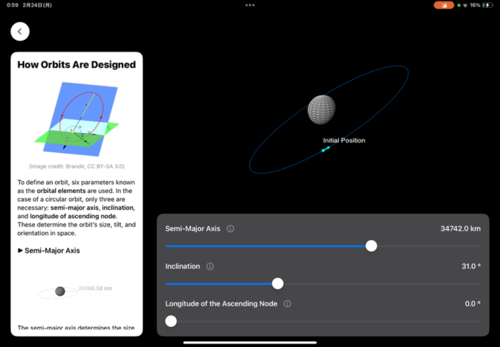Riju Ishiwatari, a student in the Nagoya University School of Engineering, has been selected as a winner in the “Swift Student Challenge,” a global programming competition sponsored by Apple that was held in February 2025. Organized as part of the annual Worldwide Developers Conference (WWDC), the competition is an opportunity for students from around the world to submit app playgrounds created using the Swift programming language. Each year, 350 students are chosen as winners for their outstanding work.

Encouraging interest in aerospace engineering through AR
Ishiwatari submitted “OrbitPlay,” an educational iPad app that allows users to assemble satellites, design orbits, and realistically experience missions using AR. The app was developed with the goal of conveying the appeal of aerospace engineering to a wide range of users, from young children to high school and university students, by transforming it into an interactive AR experience.
To capture the interest of users across this broad demographic, particular attention was given to balancing game elements and educational components. As a result, OrbitPlay manages to be fun and engaging, while also serving as a first step toward learning more about aerospace engineering for students with even the slightest interest in the field.



This article was originally published in Japanese and has been translated and edited for clarity and readability by the Nagoya University International Communications Office while preserving the original content’s intent. The original Japanese version is available here.
